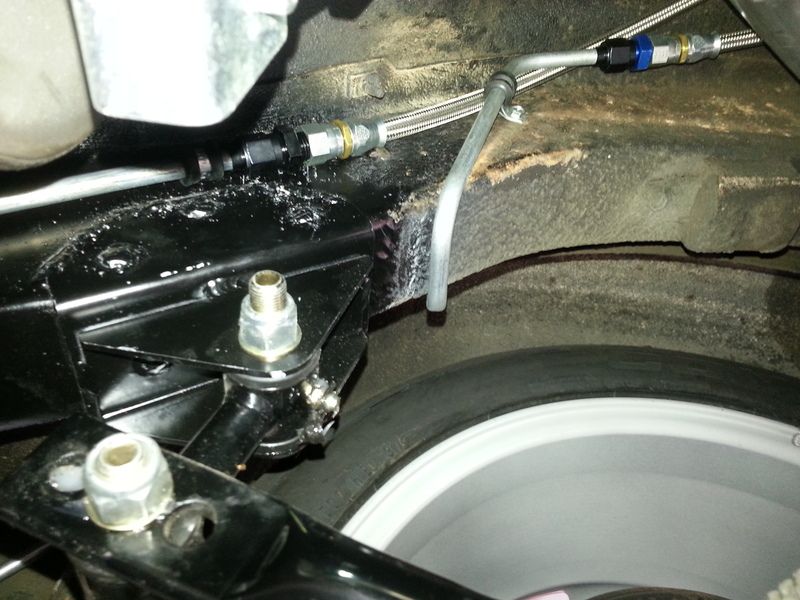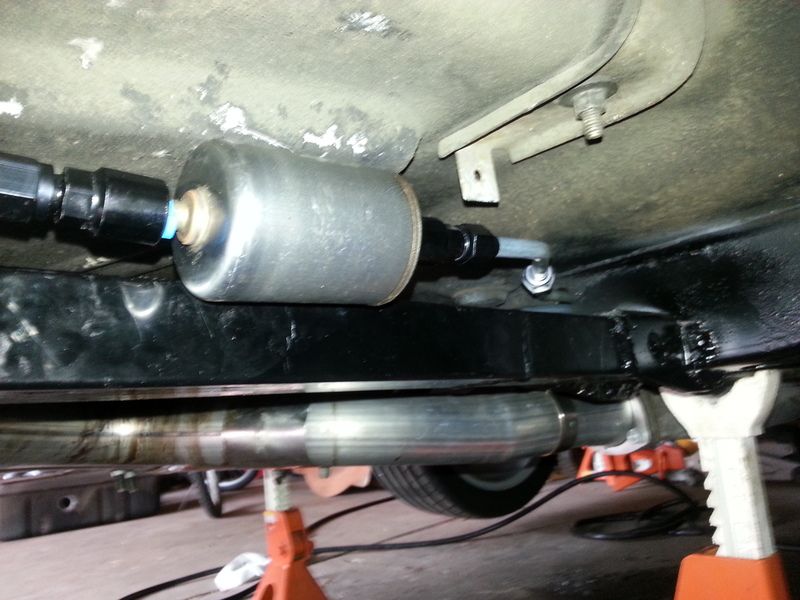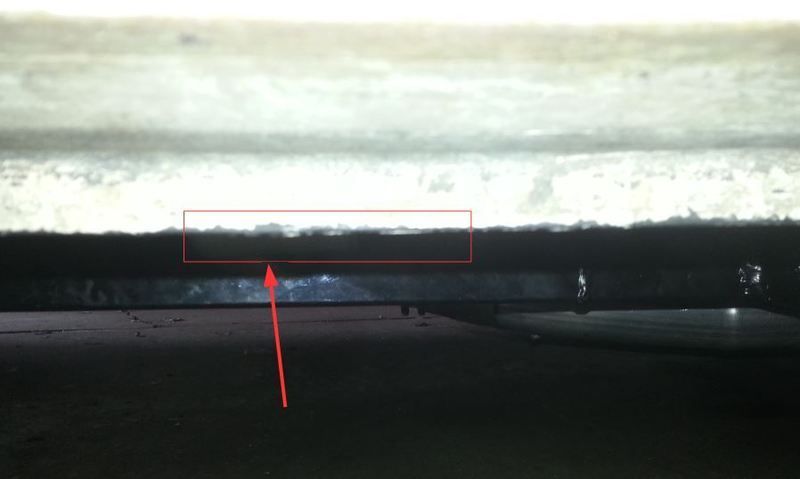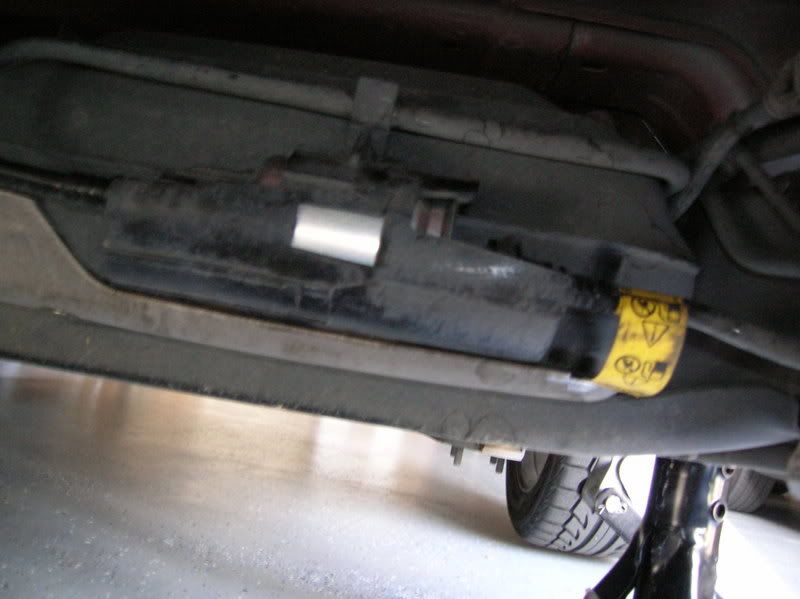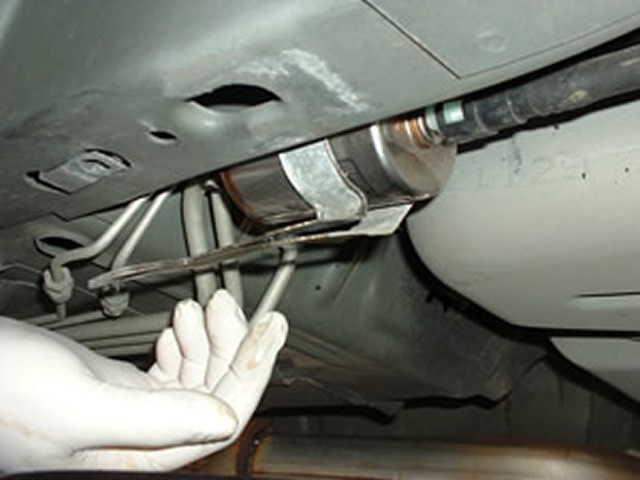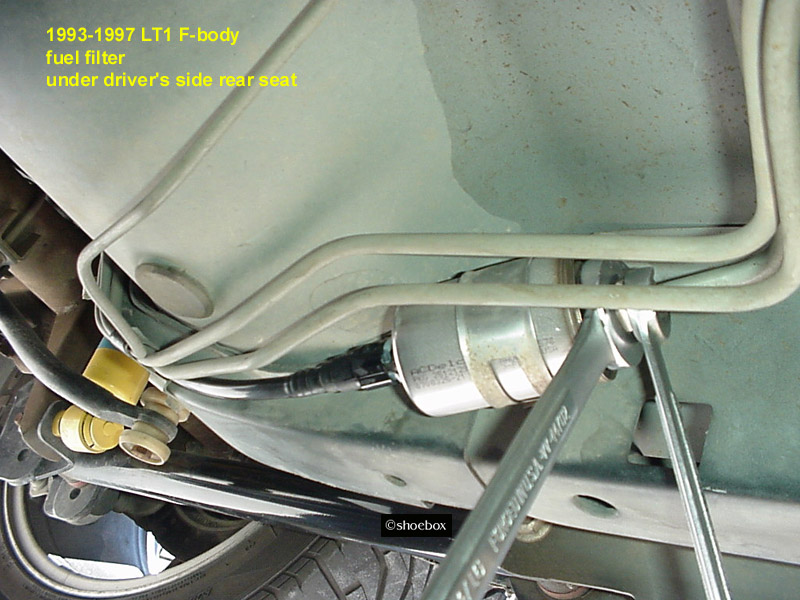do I have to go under and plan everything out , fittings, bends, adapters, clamps and all this to make a list? Figure out the thread size, course and all?
YES!!!
First, if this is a street application, I would be more inclined to run steel lines for durability. Aluminum can bend or puncture pretty easily. You can get a coil of coated line from a parts store pretty cheap or go hog wild and use stainless. Stainless is hard to flare though and can be tough to bend. Stainless can also leak at first, you have to re-seat fittings sometimes before they seal 100%. Stainless is nice but can be more of a pain than it's worth.
Stay away from rubber line and hose clamps with EFI. EFI is around 5-10x more pressure than a carb. depending on what your pump is putting out. Don't even think about using that junk. Use -AN style hose ends that screw into tube nuts from a hard line.
Speaking of flares, if you choose to go the -AN route, then you will need a 37* flaring tool. Regular flares are 45* and are not compatible with -AN fittings. Don't skimp here, you will be sorry. Crappy tools suck to work with and poor flares that wind up leaking will make you want to shoot yourself. AMHIK.
You will need a tubing bender. You can get the cheap 3-in-1 type from the parts store or Sears but I would look for Imperial Eastman benders. Sometimes you may find the cheap one works better for some particular situation but you will rely heavily on the Imperial for most bending operations.
A far as brands - Earl's, Russell and Aeroquip all make really nice fittings and adapters for every permutation of line you could think of. You will become immersed in the world of fittings and adapters. I have a lot of XRP fittings because that's what they sell at my local speed shop. I prefer the other brands but have had no problems with any of their parts. A lot of guys swear by XRP too. You can't go wrong with any of those brands.
For flex hose, I like the Russell Pro Classic black woven stuff. They make matching fittings for it, looks cool and works great. Super light too and easy to work with. Earl's, Aeroquip and XRP all make their own brand, all good stuff. I have been using socketless too which might be a little tougher stuff than the woven.
Use insulated line/Adel clamps to hold stuff in place and to keep it from chafing other stuff and vibrating like crazy. Try to use bulkhead fittings if lines pass through things like cross members or sheet metal. Remember to use heat shielding stuff if the lines go near exhaust. Thermotec, DEI etc. makes what you need. Just remember to put the heat shield over the lines before you put the fittings on or you might not be able to get the stuff on.
There is a good book to get for reference called
Hi Performance Plumbing and Fasteners by Mike Mavrigian. Please try to buy from Motorbooks, not the all-encompassing, monolithic web store that is taking over every facet of independent commerce on this planet.

